Before I introduce this place, I want to show you two photos below. 1st one (below) is the photo of afternoon sun blocked by haze. You can tell the haze is really dense.
Next one is the photo of our city attacked by haze. The haze from Kalimantan every year is really a nuisance. Such pollution not only affecting our economy, it also damages our health. Don’t you hate it?
The place that I’ll talk about has very close relationship with haze. The title has said it. It’s Klias Peat Swamp Field Center (KPSFC), 10 KM south-west of Beaufort. When you drive pass Beaufort toward the direction of Sipitang town, a few minutes later, turn right to the junction with the sign “Kg Luagan”, follow the main road, then you need to turn to two junctions again, to Jalan Luagan and Jalan Sanginan (see Location Map).
Soon you will see the sign “Hutan Paya Gambut Klias” (means Klias peat swamp forest), drive another 3.5 KM on a gravel road and you will reach Klias Peat Swamp Field Center.
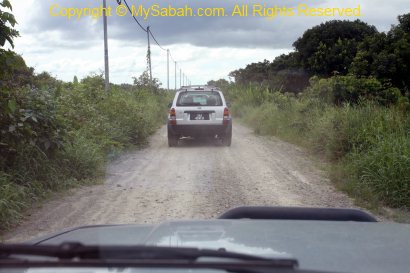
>> Click Here to see more photos of Klias Peat Swamp Field Center (KPSFC)
What is Peat Swamp Forest?
Peat swamp forest is wetland with a layer of decomposing organic matters, such as dead leaves and plant material, up to 20 Meters thick. Waterlogged soils prevent dead leaves and wood from fully decomposing, which over time forming acidic peat (pH 2.9 – 4), giving a typically dark brown to black colour to the water – hence the name ‘blackwater swamps’. An estimated 1.54 million hectares of peat swamp forest still remain in Malaysia (but going fast!). More than 70% are in Sarawak, less than 20% in Peninsular Malaysia and the rest (over 2/3 are in Klias) in Sabah.
Importance of Peat Swamp
Peat swamp forest is highly diverse with as many as 927 species of flowering plants and ferns recorded in Borneo. It provides sanctuary for migratory birds and home to more than 60 endangered animal species such as Orangutan, Proboscis Monkey, Sumatran Rhinoceros, Asian Elephant, Tiger, Civet Otter, Storm’s Stork and Wrinkled Hornbill. Arowana, a very expensive aquarium fish, also lives in peat swamp. Peat swamp forest is also very important for our nature tourism, as many tourists want to see proboscis monkey and fireflies, which live in our peat swamp forest such as Klias, Weston and Garama
That’s why Sabah Forestry Department gazetted 3,630 ha of peat swamp in Klias as Class I protected forest reserve. They also open KPSFC in 2006 for conservation and research of peat swamp forest. FYI, the peat swamp of Klias is over 5,400 years old and the peat can be as deep as 13 Meters!
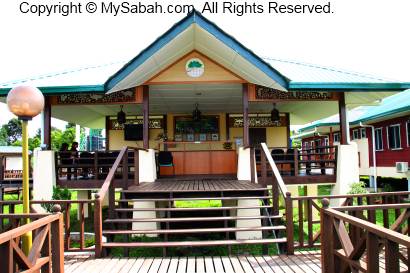
Above: the reception building of KPSFC.
Opening Hours & Contact
GPS Location: 5.325683, 115.673054 (see Location Map)
Mon – Thu: 9am-1pm, 2pm-4:30pm
Friday: 9-11am, 2pm-4:30pm
Closed on weekends
Tel: +60 87-208101, +60 87-208102 (Note: If the phone numbers don’t work, you may call the mobile phone of Center Manager, Mr. Christopher Matunjau at +60 17-8101070)
Facebook: kliaspeatswamp.fieldcentre
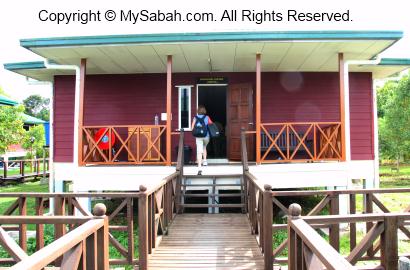
Above: the hostel in KPSFC can accommodate 16 to 30 people. Of course tourists can visit this place, but it’ll be better if they can bring a very knowledgeable tour guide, someone who can give them very good interpretation talk. Sadly, most tour guides in Sabah have 0 or poor knowledge on wetlands ecology.
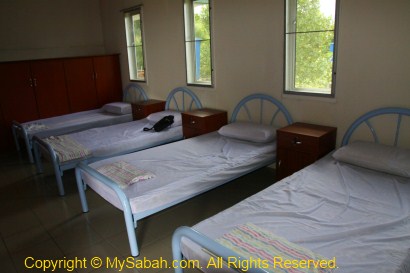
Above: our bedroom in the hostel. The room is quite comfortable and equipped with air-conditioning. There is a big male and female washrooms in the building. Overall, the place is clean but the toilet is poorly constructed. Not only that it is very small, a few doors also can’t be closed properly, making you wondering why those people didn’t monitor the quality of the construction.
You can watch the 1-minute video below if you want to get a feel of the surrounding of Field Center:
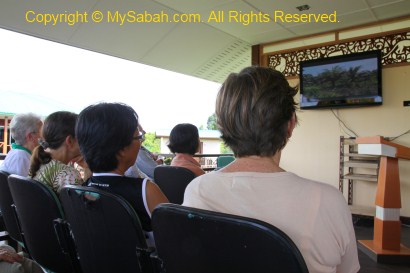
Then we were shown a short video briefing in the reception building. The vegetation of Klias is a mix of peat forests, mangroves, nipah swamps, freshwater swamp forests, open marshes, heath forest and dryland forests, one of the most diversified and outstanding examples of peat swamp forest in Borneo. Klias is the largest peat swamp forest of Sabah, located on the delta of the Padas and Bukau rivers. At first glance, it does not look like an impressive attraction. Unlike a lively and flowing river, what you will see is a stalled brackish river with unpleasant smell.
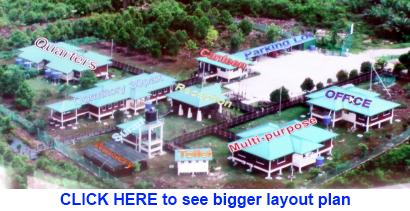
You may click the picture above to see the layout of the Field Center. All necessary facilities are in place, except a restaurant.
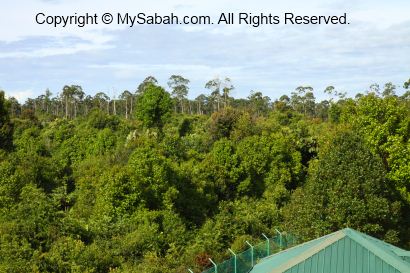
Above: the peat swamp forest behind the Field Center.
>> Click Here to see more photos of Klias Peat Swamp Field Center (KPSFC)
Luckily visitors do not need to step into the mud and swamp to explore the peat swamp forest. You can walk on 2.7 KM of wooden boardwalk to get close to peat swamp. The walk takes about 2 hours and the starting point is just behind the reception building.
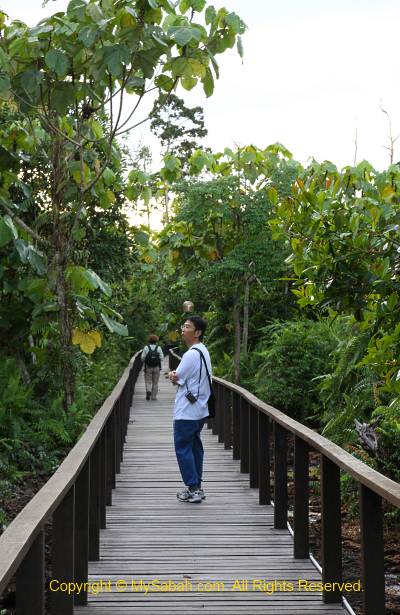
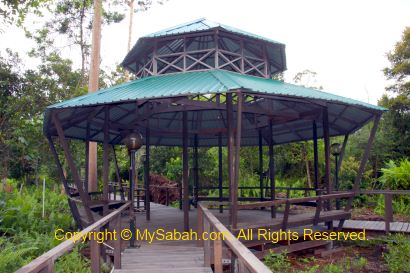
>> Click Here to see more photos of Klias Peat Swamp Field Center (KPSFC)
In early morning and late afternoon, the boardwalk is a nice place for bird-watching. You would see hornbills and woodpeckers. A rare Hook-billed Bulbul bird can be found here. Sometimes the bird watching guides bring tourists to look for birds here. I only saw glossy starling, dollar bird, kingfisher, imperial green pigeon and Hill Myna. Do bring a binocular if you plan to see birds.
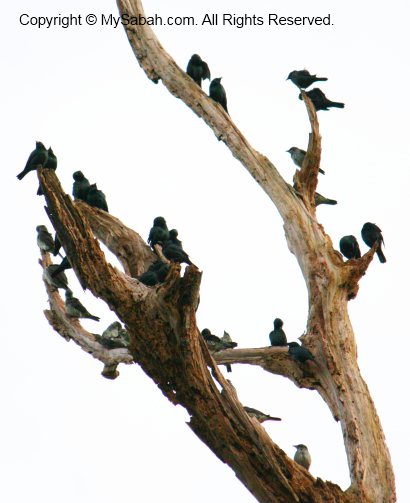
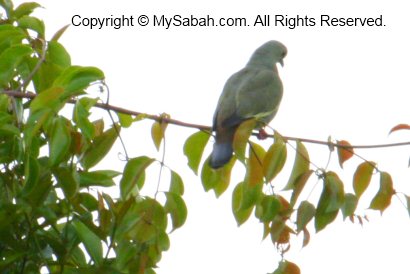
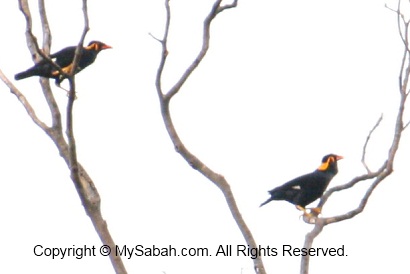
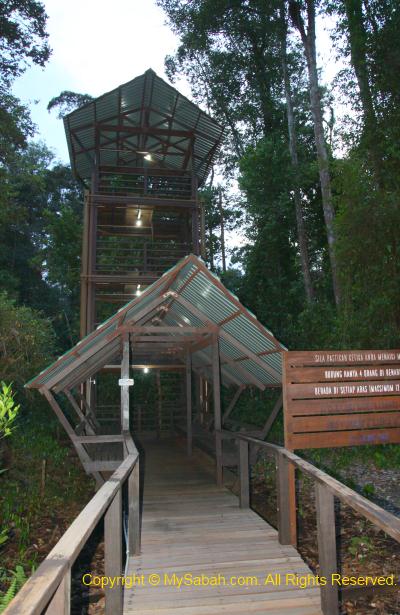
They also have a bird watching tower.
>> Click Here to see more photos of Klias Peat Swamp Field Center (KPSFC)
You may spot interesting plant or insect next to the boardwalk. Some look weird. 4 species of pitcher plant live in peat swamp.
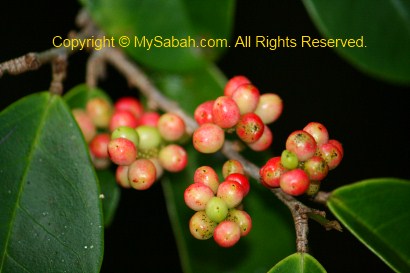
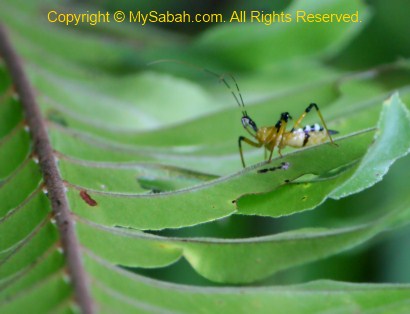
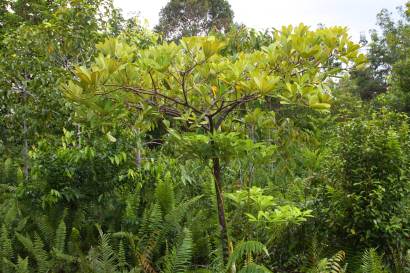
>> Click Here to see more photos of Klias Peat Swamp Field Center (KPSFC)
To my surprise, there are many tall trees in this area. Like the Kapur Paya (Dryobalanops rappa) in photo below. It is endemic to Borneo and can grow up to 55 Meters tall. It is a threatened species due to its value as a commercial hardwood “Kapur”. Kapur Paya was not the favorite timber in the past coz its log sinks in the water. But when timber price goes up today, it becomes the feasible target of logging.
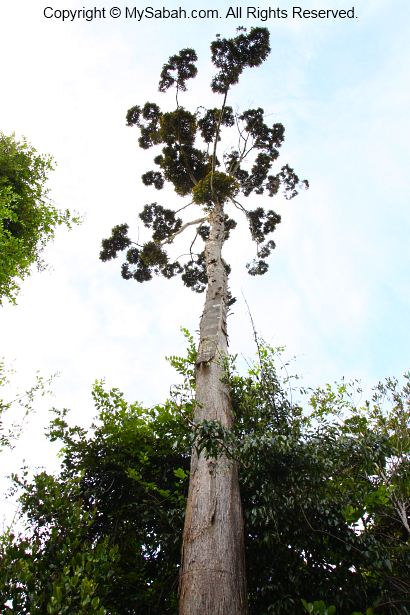
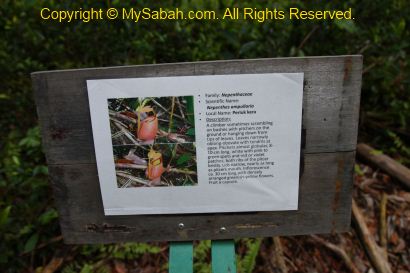
Above: there are many interpretation signs (in English) along the boardwalk for tourists to self-educate themselves.
Haze from Peat
Ok, let’s come back to the haze and peat swamp things. How are both related? Heavily packed with centuries of decaying organic material (i.e. dead wood & trees), peat swamp stores a huge quantity of carbon. A 10-Meter deep peat swamp can store about 5,800 tonnes of carbon per hectare, compared to 300-500 tonnes per hectare for other types of tropical forest. When peatlands are drained, dried, and burned for opening up new land for plantation such as oil palm every year, they emit over 3 billion tons of CO2, more than 10 percent of annual CO2 emissions, contributing to global warming!
What is shocking – dry peat swamp forests are very vulnerable to fire and produce the most carcinogenic haze. Fires in peat swamps are extremely difficult to extinguish because the fire can smolder deeply underground for YEARS, even after surface fires are put off by rains, creating haze that regularly haunts Southeast Asia. By now you should know why Indonesia has problem to stop haze.
After the planters drain and dry the peat swamp, they will burn it to clear the land for oil palm plantation. Imagine tons of carbon, which was locked under the ground for thousand of years, suddenly free and escape into the atmosphere as Carbon Dioxide… DISASTER!!!
There is only a self-catering kitchen in the Field Center, but that’s not a problem for our wonderful ladies who can cook. We had a great BBQ dinner! But I need to warn you that there are many mosquitoes in the evening and they can bite through my thin socks! Remember to bring insect repellent.
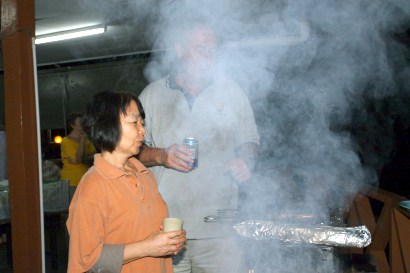
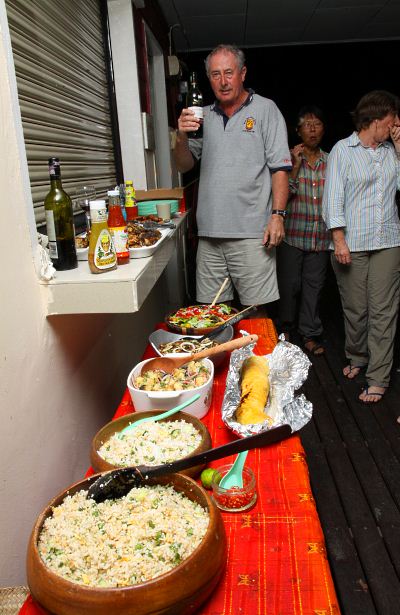
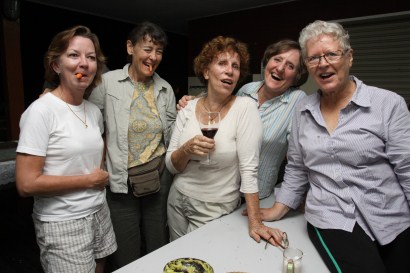
>> Click Here to see more photos of Klias Peat Swamp Field Center (KPSFC)
After heavy meal, a few of us decided to do a night walk. FYI, you may request the ranger to turn on the light along the boardwalk (but we didn’t). With the aid of torchlight, we walked quietly and saw termites, bats, frog and big millipede. The starry night is also a great feature here.
You would see wild animals such as wild boar, civet and badger at night, but you have to be very lucky. Guess that was not our night, though we could sense that this forest was very lively in the dark.. No wonder there are some old stories that warn children not to play till dark because the “tembuakar” which roams swamps and rivers on Sabah’s southwest coast will subdue them. Indigenous communities claim the creature takes on 44 life forms, appears after a heavy storm, is capable of uprooting bridges and can overnight “eat” grasses that clog rivers.
However, this monster has more reason to be afraid of human because new studies by Netherlands-based Wetlands International conclude that 20 percent of all Malaysian palm oil is produced on drained peatlands. They even say peat swamp will disappear from Sarawak state by the end of the decade if the destruction does not cease.
Conclusion
In Sabah, I see blue sky almost every day. I thought the beautiful sky would be there for me forever, until the haze from open burning turns our sky into grey color. Only then I realize that we should not take our environment for granted, or we will lose it forever.
Photos taken in Beaufort, Sabah, Malaysia Borneo

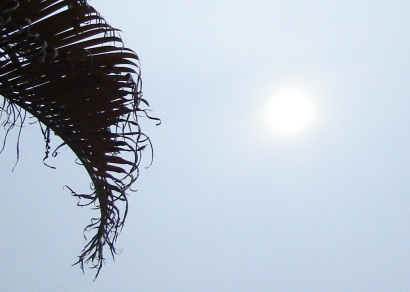
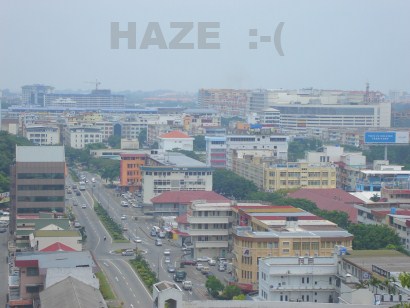
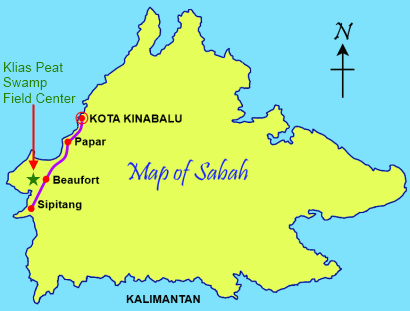

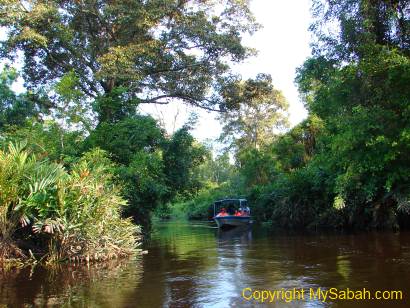
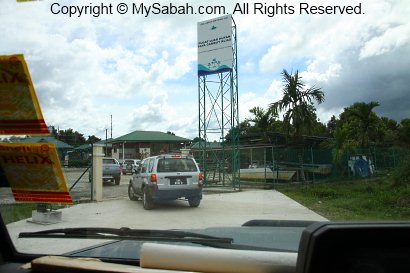
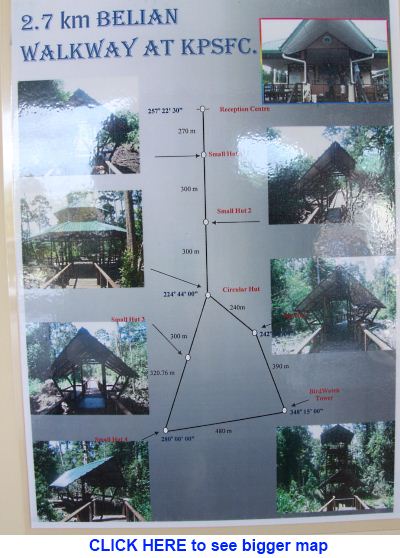
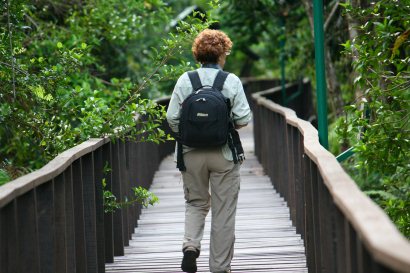
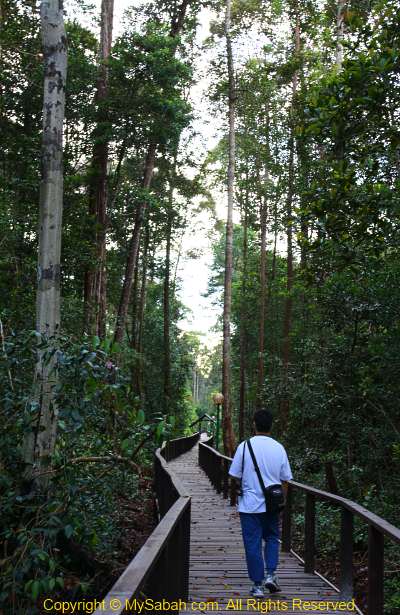
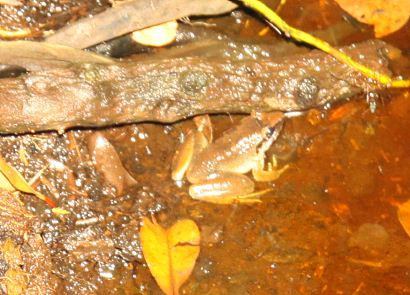
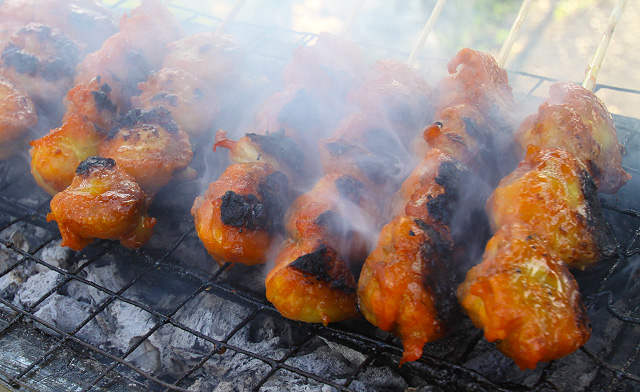
Sabah have senior tourist guides who do have very good knowledge regarding the wetlands which include peat swamp in Sabah.
Are you GL? 🙂 Agree. I know a few really good tour guides who even can name the species of mangrove. To come to that level, they must be highly passionate about their job.